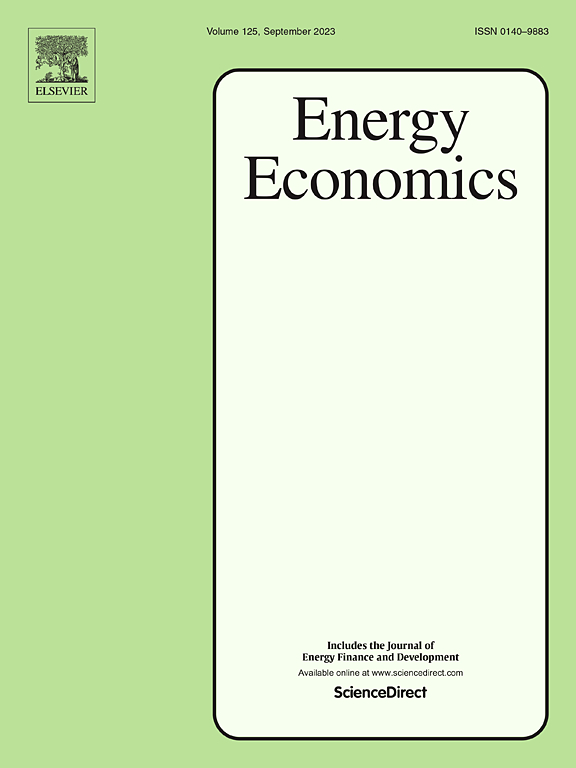中国国家碳排放交易机制在减少企业排放方面的有效性
IF 14.2
2区 经济学
Q1 ECONOMICS
引用次数: 0
摘要
中国于2017年宣布的全国碳排放交易体系(ETS)已成为全球最大的碳市场,并与已有的区域试点一起运作。然而,关于新建立的国家碳排放交易体系的详细评估,特别是与区域试点相比,仍然有限。本研究利用中国电力部门的单位监测数据,结合中介模型和适度模型,考察了中国国家碳排放交易体系相对于试点碳排放交易体系的碳减排效果。我们发现,虽然国家碳排放交易体系和试点碳排放交易体系都显著降低了碳强度,但试点碳排放交易体系的效果更为明显。这种减少背后的一个机制是燃料质量的提高,正如碳含量的减少所证明的那样。区域经济增长和工业活动的较高份额似乎抵消了该政策的总体有效性。异质性分析表明,与较大或较新的单位相比,较小和较老的单位的减缓效果更大。我们对中国国家碳排放交易体系的单位层面实证评估不仅推进了对排放交易机制的理论认识,而且为新兴经济体完善或建立碳市场政策提供了可操作的见解。本文章由计算机程序翻译,如有差异,请以英文原文为准。
The effectiveness of China's national emissions trading scheme in mitigating firm emissions
China's national emissions trading scheme (ETS), announced in 2017, has become the largest carbon market worldwide, operating alongside pre-existing regional pilots. However, detailed assessments regarding the newly constructed national ETS, particularly in comparison with the regional pilots, remain limited. Using unit-level monitoring data from China's power sector and combining intermediary and moderate models, this study investigates the carbon mitigation impact of China's national ETS relative to pilot ETSs. We find that while both the national and pilot ETSs significantly reduce carbon intensities, the effect was more pronounced in pilots. A mechanism behind this reduction is the improvement in fuel quality, as evidenced by a decrease in carbon content. Regional economic growth and a higher share of industrial activity appear to offset the policy's overall effectiveness. Heterogeneity analysis shows that the mitigation effects were greater in smaller and older units compared to their larger or newer counterparts. Our unit-level empirical evaluation of China's national ETS not only advances theoretical understanding of emissions trading mechanisms but also provides actionable insights for refining or establishing carbon market policies in emerging economies.
求助全文
通过发布文献求助,成功后即可免费获取论文全文。
去求助
来源期刊

Energy Economics
ECONOMICS-
CiteScore
18.60
自引率
12.50%
发文量
524
期刊介绍:
Energy Economics is a field journal that focuses on energy economics and energy finance. It covers various themes including the exploitation, conversion, and use of energy, markets for energy commodities and derivatives, regulation and taxation, forecasting, environment and climate, international trade, development, and monetary policy. The journal welcomes contributions that utilize diverse methods such as experiments, surveys, econometrics, decomposition, simulation models, equilibrium models, optimization models, and analytical models. It publishes a combination of papers employing different methods to explore a wide range of topics. The journal's replication policy encourages the submission of replication studies, wherein researchers reproduce and extend the key results of original studies while explaining any differences. Energy Economics is indexed and abstracted in several databases including Environmental Abstracts, Fuel and Energy Abstracts, Social Sciences Citation Index, GEOBASE, Social & Behavioral Sciences, Journal of Economic Literature, INSPEC, and more.
 求助内容:
求助内容: 应助结果提醒方式:
应助结果提醒方式:


